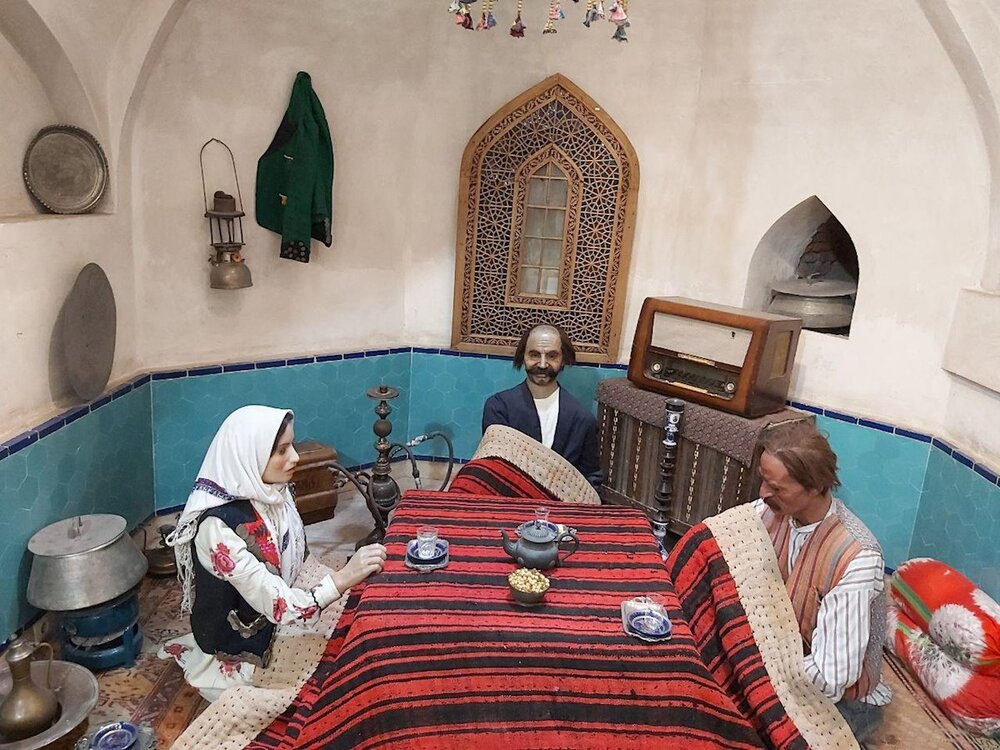A very memorable trip to the past: Ardabil Anthropology Museum

TEHRAN - One of the main delights of this spacious museum in a former bathhouse is various life-sized wax figures depicting scenes of life centuries ago.
Ardabil Anthropology Museum is a good place to learn about the way of life, customs, and local coverage of men and women, the way of local cuisine, and the special rituals of Ardabil province in northwest Iran.
The entrance to the museum begins with a dressing room and ends with a four-arm octagonal dock, where baptismal ritual baths are exhibited in past periods with statues. The works and manuscripts related to the historical and cultural identity of this area in the museum can provide valuable information about the brilliant past of the locals.
Narratives say the former bathhouse called Hammam-e Aghanaghi was constructed by an affluent man called Zahir-ul-Islam in the Ilkhanid period and 200 years later added to it. Finally, during the Qajar period, an affluent person bought, restored, and renovated it, and hence the bath was renamed to both famous names Is.
In 1999, the bath was bought and restored as a cultural heritage, and eventually, the Museum of Anthropology carried out this work. Historical baths in Ardabil are of special importance to the people of this region because they can easily narrate the history of this region from centuries ago.
Ardabil people devoted a day of the week to bathing day because of their interest in cleanliness and on that day family members went to public baths. Ardabil baths not only attracted the attention of the people of this area but also attracted the attention of historians and tourists.
Experts believe that rebuilding Zahir-ul-Islam’s bath at various historical periods has made the rich architectural complex of different times.
In the architecture of this bathroom, attention has been paid to detail, as one of the works that have all the parts of the historic baths in its collection.
Penthouse, cloakroom, shoe, cabinets, hot water pools, and cold water pools are part of the bathroom, which is now displayed in various parts of the old building. In the past, to drain these pools, one of Ardabil’s rivers, the baths on its path, were led by water from the tombstone tubes, and the water was drained and extruded using other clay pipes.
The hot and cold water pool or the Zahir-ul-Islam boil-shaped pool is one of the exemplary instances and its cold water pool 16 meters in length and 3.5 meters in width in summer was used for swimming sports.
But the transformation of baths and ancient and historic works into the museum not only preserves and revives them but also combines the architectural art of these monuments with the remains of the past.
Throughout the country, many historical bathhouses have been destroyed due to the lack of maintenance.
Among the operational ones, many of them have lost their so-called social function since most people have bathrooms in their homes due to the modern lifestyle.
Traditionally speaking, public bathhouses in Iran were not the only places for bathing and cleaning up. They had a social concept for people who gathered at these places weekly. It was a place where people talked with each other about their daily life and shared humor and news.
In the old times, there were separate bathhouses for men and women, usually built next to each other. However, there were some bathhouses, which were used by men and women at different times of the day. There were also male and female public bathhouses; at daybreak, a longhorn (Booq-e javaz) was blown to announce that the bath was ready. Men came to the baths from daybreak till the afternoon. Women could use the bathhouses from then to sunset. In some cases, five days were allocated to men and two days to ladies.
Persian literature is full of proverbs, narrations, and folk stories about bathhouses, which indicate the importance of the place in the pastime.
AM
